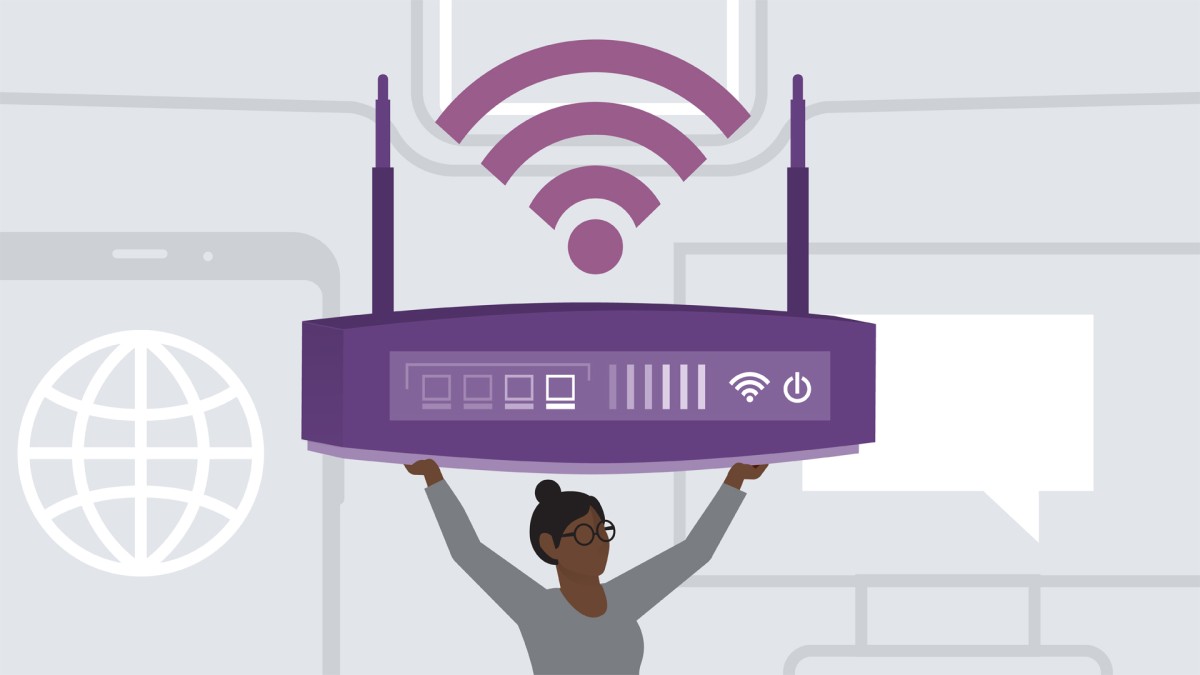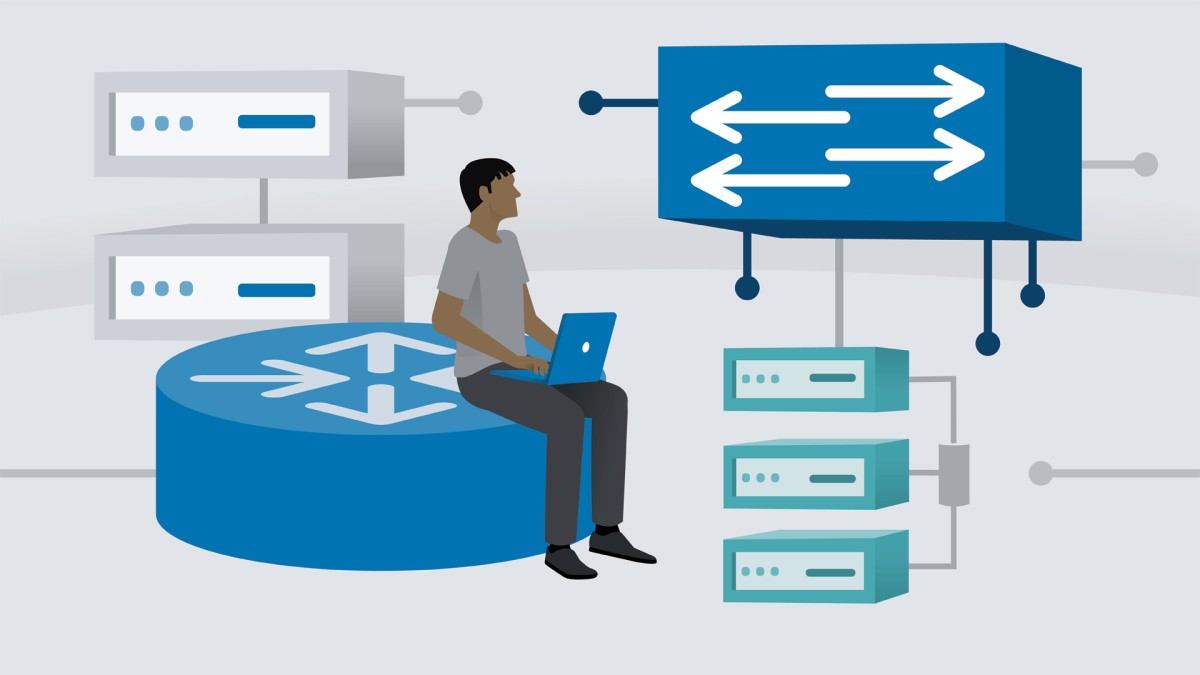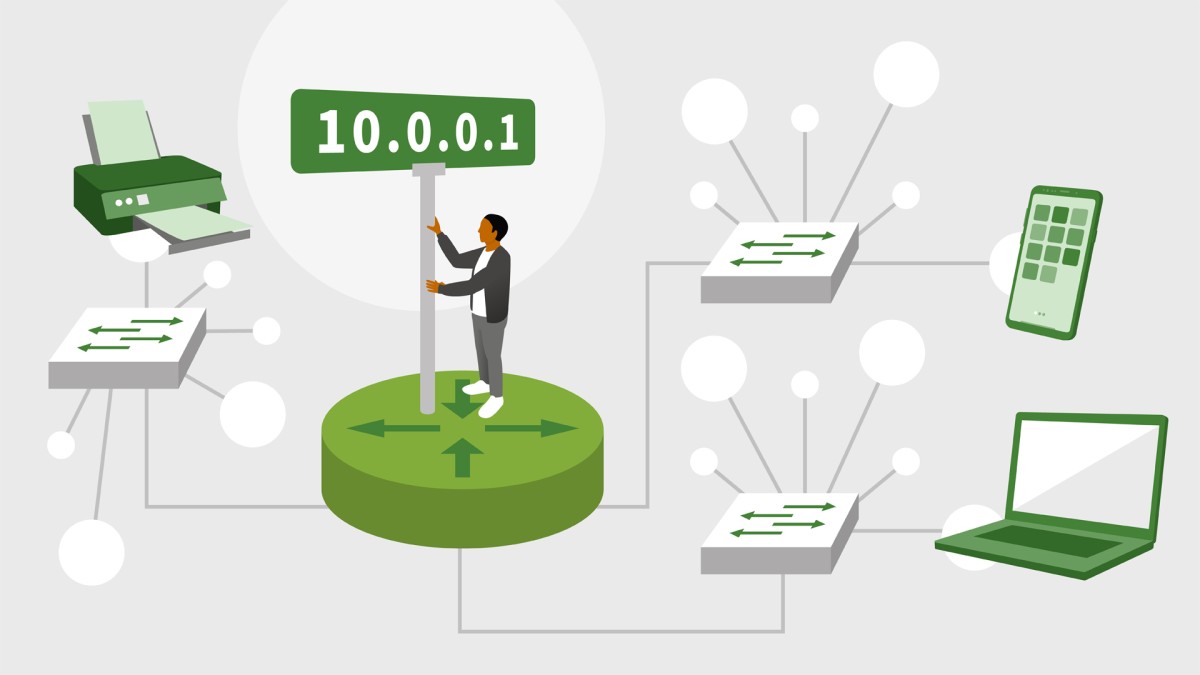Introduction
Diving into the course
()
Performing lab exercises
()
1. Foundational Networking Technologies: Common Network Components
Module 1: Foundational networking technologies
()
Lesson 1: Common network components
()
Routers
()
Switches
()
Security appliances
()
Wireless access points
()
Endpoints and servers
()
Cisco Catalyst Center
()
Virtualized devices
()
TCP vs. UDP
()
2. Foundational Networking Technologies: Common Network Architectures and Designs
Lesson 2: Common network architectures and designs
()
Three-tier vs. collapsed core architectures
()
Spine-leaf design for data centers
()
Wide area network (WAN) topologies
()
Small office and home office (SOHO) architecture
()
Cloud deployment models
()
3. Foundational Networking Technologies: Network Cabling
Lesson 3: Network cabling
()
Coax cables and connectors
()
Twisted pair cables and connectors
()
Ethernet standards for twisted pair cables
()
Straight through vs. crossover cables
()
Fiber optic cables
()
Fiber optic connectors
()
Ethernet standards for fiber optic cables
()
Power over Ethernet (PoE)
()
Troubleshooting common cabling issues
()
4. IPv4 Addressing: Binary Numbering
Module 2: IPv4 addressing
()
Lesson 1: Binary numbering
()
Binary numbering
()
Binary practice exercise #1
()
Binary practice exercise #2
()
5. IPv4 Addressing: IPv4 Address Characteristics
Lesson 2: IPv4 address characteristics
()
IPv4 address format
()
Public vs. private IPv4 addresses
()
Network address translation
()
IPv4 traffic flows
()
6. IPv4 Addressing: IPv4 Address Assignment, Verification, and Name Resolution
Lesson 3: IPv4 address assignment, verification, and name resolution
()
Manual IPv4 address assignment
()
Dynamic IPv4 address assignment
()
Domain Name System (DNS)
()
7. IPv4 Addressing: Subnetting
Lesson 4: Subnetting
()
The need for subnetting
()
Calculating available subnets
()
Calculating available hosts
()
Subnetting practice exercise #1
()
Subnetting practice exercise #2
()
Calculating usable ranges of IPv4 addresses
()
Subnetting practice exercise #3
()
8. IPv6 Addressing: IPv6 Address Format and Communication
Module 3: IPv6 addressing
()
Lesson 1: IPv6 address format and communication
()
Hexadecimal numbering
()
IPv6 address format
()
Shortening an IPv6 address
()
IPv6 address shortening exercise
()
IPv6 traffic flows
()
9. IPv6 Addressing: IPv6 Address Types
Lesson 2: IPv6 address types
()
IPv6 global unicast
()
IPv6 multicast
()
IPv6 link-local
()
IPv6 unique local
()
IPv6 loopback
()
IPv6 unspecified
()
IPv6 solicited-node multicast
()
Manual IPv6 address assignment
()
EUI-64
()
Dynamic IPv6 address assignment
()
10. Ethernet Switching: Ethernet Switch Fundamentals
Module 4: Ethernet switching
()
Lesson 1: Ethernet switch fundamentals
()
Layer 2 vs. multilayer switches
()
Examining the MAC address table
()
11. Ethernet Switching: Neighbor Discovery
Lesson 2: Neighbor discovery
()
Cisco Discovery Protocol (CDP)
()
CDP configuration
()
Link Layer Discovery Protocol (LLDP)
()
LLDP configuration
()
12. Ethernet Switching: Virtual LANs (VLANs)
Lesson 3: Virtual LANs (VLANs)
()
VLAN theory
()
VLAN configuration
()
Router-on-a-stick
()
Switch virtual interface (SVI)
()
Routed switch port
()
13. Ethernet Switching: Trunking
Lesson 4: Trunking
()
Trunking theory
()
Trunking modes
()
Trunking configuration
()
Voice VLAN theory
()
Voice VLAN configuration
()
14. Ethernet Switching: Spanning Tree Protocol (STP)
Lesson 5: Spanning Tree Protocol (STP)
()
STP port states
()
STP exercise
()
STP convergence times
()
PVST+ theory and configuration
()
Portfast
()
Root guard
()
Loop guard
()
BPDU filter
()
BPDU guard
()
MSTP theory
()
Rapid PVST+ theory
()
Rapid PVST+ configuration
()
15. Ethernet Switching: EtherChannel
Lesson 6: EtherChannel
()
Introduction to EtherChannel
()
EtherChannel port options
()
EtherChannel load balancing
()
Layer 2 EtherChannel configuration
()
Layer 3 EtherChannel configuration
()
16. Routing: Routing Fundamentals
Module 5: Routing
()
Lesson 1: Routing fundamentals
()
Review of the routing process
()
Administrative distance
()
Routing protocol comparison
()
Routing table examination
()
17. Routing: Static Routing
Lesson 2: Static routing
()
Static default route configuration
()
Static network route configuration
()
Static host route configuration
()
Floating static route configuration
()
18. Routing: OSPFv2 Routing
Lesson 3: OSPFv2 routing
()
OSPF neighbor formation
()
DR and BDR election
()
OSPF network types
()
OSPF areas
()
LSA types
()
OSPFv2 configuration
()
OSPFv2 verification
()
9. Routing: First Hop Redundancy Protocols (FHRPs)
Lesson 4: First hop redundancy protocols (FHRPs)
()
Hot Standby Router Protocol (HSRP)
()
Virtual Router Redundancy Protocol (VRRP)
()
Gateway Load Balancing Protocol (GLBP)
()
20. Wireless Networks: Overview of Wireless Networks
Module 6: Wireless networks
()
Lesson 1: Overview of wireless networks
()
Wireless access points
()
Wireless LAN (WLAN) designs
()
Access point modes
()
Service set terminology
()
Radio frequency (RF) basics
()
Wireless interference
()
21. Wireless Networks: Wireless Network Configuration
Lesson 2: Wireless network configuration
()
Selecting a Wi-Fi standard
()
Transmission methods
()
Spatial streams
()
Channel bonding
()
WLC configuration via a graphical interface
()
22. Network Services: Network Address Translation (NAT)
Module 7: Network services
()
Lesson 1: Network address translation (NAT)
()
Static NAT configuration
()
Dynamic NAT configuration
()
Port address translation (PAT) configuration
()
23. Network Services: Network Time Protocol (NTP)
Lesson 2: Network Time Protocol (NTP)
()
NTP theory
()
NTP configuration and verification
()
24. Network Services: Dynamic Host Configuration Protocol (DHCP)
Lesson 3: Dynamic Host Configuration Protocol (DHCP)
()
Configuring routers as DHCP clients and servers
()
25. Network Services: Network Management Services
Lesson 4: Network management services
()
Options for network management access
()
Artificial intelligence (AI) for network management
()
Simple Network Management Protocol (SNMP) theory
()
SNMP configuration
()
Syslog
()
Configuring remote access with secure shell (SSH)
()
FTP and TFTP
()
26. Network Services: Quality of Service (QoS)
Lesson 5: Quality of service (QoS)
()
Fundamentals of QoS
()
Traffic markings
()
Prioritizing traffic types
()
Shaping, policing, and the token bucket
()
Configuring QoS
()
27. Network Security: Threats and Defense
Module 8: Network security
()
Lesson 1: Threats and defense
()
CIA triad
()
Threats vs. vulnerabilities
()
Social engineering attacks
()
Denial-of-service attacks
()
Other common attacks
()
Password protection of Cisco devices
()
Authentication, authorization, and accounting (AAA)
()
Multifactor authentication
()
Encryption
()
Virtual private networks (VPNs)
()
Password best practices
()
Wireless security protocols
()
Configuring a wireless LAN for WPA2 with a pre-shared key
()
28. Network Security: Access Control Lists (ACLs)
Lesson 2: Access control lists (ACLs)
()
ACL overview
()
Numbered standard ACLs
()
Numbered extended ACLs
()
Named ACLs
()
ACL considerations
()
29. Network Security: Layer 2 Security Features
Lesson 3: Layer 2 security features
()
DHCP snooping theory
()
DHCP snooping configuration
()
Dynamic ARP Inspection (DAI) theory
()
Dynamic ARP Inspection (DAI) configuration
()
Port security theory
()
Port security configuration
()
30. Network Programmability: Software-Defined Networking (SDN)
Module 9: Network programmability
()
Lesson 1: Software-defined networking (SDN)
()
Overview of SDN
()
REST APIs
()
JSON formatting
()
Cisco SDN controllers
()
Software-defined architectures
()
31. Network Programmability: Configuration Management
Lesson 2: Configuration management
()
The DevOps lifecycle
()
Configuration management with Ansible
()
Configuration management with Terraform
()
32. Exam Preparation
Module 10: Exam preparation
()
How to register for the exam
()
Study strategies
()
What to do on exam day
()
Conclusion
Module 11: Congratulations and next steps
()





